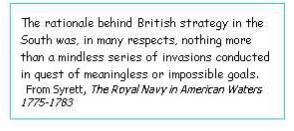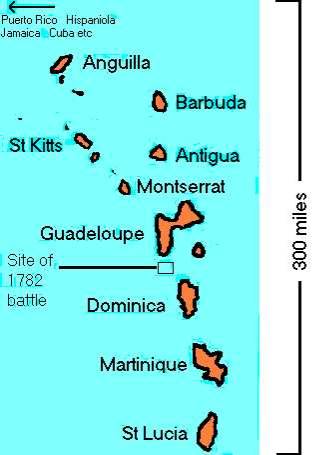 |
 |
Henry Cort Inventor - Creator of puddled iron - Father of iron trade |
 |
 |
| This page is part of a website based on the life and achievements of eighteenth-century inventor Henry Cort. The creator and owner of the site was Eric Alexander who passed away. The site is now hosted by Geneagraphie.com Please contact us with any comments or queries. |
- Homepage
- Life of Henry Cort
- Cort's processes in iron manufacture
- Cort's patents
- Refutation of allegations of conspiracies against Cort
- Adam Jellicoe's death
- Henry Cort's birth
- A navy agent's business
- Early life of John Becher
- Attwick & Burges families
- "Cortship" of second wife
- Thomas Morgan
- Henry Cort's hoops contract
- 1856 Accolade
- Generosity of friends 1789-94
- James Watson
- Illness of Cort's son
- Main sources of information
- Contemporary sources
- Navy sources
- Chancery files
- Publications about Cort
- Assessment of Cort's character
- Images of Henry Cort
Impeach-tranferred to 05
- Parliamentary inquiry 1811-2
- The furore of the 1850s
- Society of Arts
- Cort's first marriage
- Henry Cort's children
- Cort family pensions
- Henry Cort's Hertfordshire property
- 1791 signatories
- Guiana and the Cort-Gladstone connection
- Cort's twilight years
- Memorials to Henry Cort
- Smelting of iron
- Fining before Cort
- Shropshire & Staffordshire ironmasters
- Cumbrians: Wilkinson etc
- Early works at Merthyr Tydfil
- The Crowley business
- London ironmongers
- Scottish iron
- Cort's promotion efforts 1783-6
- Later Merthyr connections
- Puddling after Henry Cort
- Gosport in Cort's day
- Gosport administration
- Gosport worthies
- The Amherst-Porter network
- James Hackman, murderer
- Samuel Marshall
- Samuel Jellicoe's legacy
- Links with Titchfield
- Links with Fareham
- Fact, error and conjecture
- 18th century politics
- Law in the 18th century
- 18th century finance
- Religion and sexual mores
- Calendar change of 1752
- Shelburne, Parry and associates
- John Becher's family
- The Becher-Thackeray lineage
- Thomas Lyttelton: a fantastic narrative
- Eighteenth-century London
- Abolition and the Corts
- The Burges will tangle
- Navy connections
- Navy agent's business
- Cort's clients
- Ships' pursers
- History of Adam Jellicoe
- Dundas & Trotter
- Cort's navy office associates
- Toulmin & other agents
- Sandwich & Middleton
- The Arethusa
- John Becher's war
- Thomas Morgan's war
- The 1782 Jamaica convoy
- Sinking of the Royal George
- Visitors 2006-2009
- Developement of the site 2006-2009
- Daniel Guion and family
- Extremely bad academic work and extremely bad journalism
****************
|
|
Thomas Morgan's war
Thomas Morgan's first post after the American War breaks out is as purser on the 74-gun Russell. Her first assignment is with a squadron under Admiral Byron sent to reinforce the fleet in America following news that a French fleet under Admiral d'Estaing is heading across the Atlantic. At this stage Britain and France are not yet officially at war.
Byron is said to be known throughout the service as "Foul-weather Jack" because of his tendency to encounter bad weather. Sure enough, Russell's log records several such encounters.
|
318 Leagues from Lizard in Squall lost the main Top Sail heavy sea got down below damaged a quantity of bread 4ft of water in the ship. From Russell log, 4 July 1778. |
The ship is so badly damaged she has to return to England. One is tempted to say she limps back, but in fact she arrives in Plymouth Sound in ten days, compared to her month-long outward trip.
After being repaired, she has to wait for a new expedition under Admiral Marriot Arbuthnot, sailing to take command in the American theatre in 1779, by which time France has officially entered the war.
|
Arbuthnot, throughout a long and undistinguished career, had shown no great ability and even less tact. If the lords of the Admiralty had gone through the navy list looking for a flag officer who should not be sent to New York, they could not have come up with a better choice than Arbuthnot. From Syrett, The Royal Navy in American Waters 1775-1783. |
They arrive late in August. Arbuthnot and the army commander, General Clinton, undertake an adventurous project to capture Charleston. Russell is part of the fleet.
 The outcome can be reckoned the high point of the war from Britain's point of view. Not only does the town fall, but the defending force is isolated and forced to surrender.
The outcome can be reckoned the high point of the war from Britain's point of view. Not only does the town fall, but the defending force is isolated and forced to surrender.
Russell's share in the victory is limited, however. In March 1780, two months before the end of the campaign, she has to return New York because of sickness among the crew. She is then ordered to the Caribbean, where she comes under the command of Admiral Rodney. In September Rodney's fleet heads north, following intelligence of a new French threat.
Rodney joins Arbuthnot in New York, but the commanders rapidly fall out. Russell returns to the Caribbean with a convoy, soon followed by Rodney.
In July 1781 Thomas Morgan leaves Russell for Alfred, another 74-gunner. By this time a squadron under Rear Admiral Samuel Hood (like brother Alexander, a former protégé of Thomas Smith) has arrived in the Caribbean.
Rodney hands command over to Hood and returns to England. He needs the break to recover from ill health.
|
At 11 sailed Adm Rodney in Gibraltar for England with convoy. From Alfred log, 1 August 1781. |
A new assignment beckons. Lord Cornwallis, left in Charleston with a large army and the task of extending British control in South Carolina, has perversely taken most of his troops way north into Virginia and is busy fortifying a base at Yorktown, on the western shore of Chesapeake Bay. Meanwhile a French fleet, under Admiral de Grasse, is heading north from the Caribbean.
Is he making for the Chesapeake, or for New York? There a new commander, Thomas Graves, has taken over from Arbuthnot. His fleet needs reinforcing to respond to both threats. Alfred is one of the squadron Hood takes north and puts at Graves's disposal.
Worrying news! The main American army under Washington has left its position north of New York and is heading for Philadelphia, on its way to Yorktown. Naval support for the Yorktown garrison is more urgent than ever.
Graves's fleet arrives at the mouth of Chesapeake Bay on 5th September. De Grasse has got there first! As the French emerge from the bay, Alfred leads the British line to engage them.
Graves gives the signal to tack. The British line goes into reverse, Alfred now in the rear. As the two fleets converge, a fierce engagement between their vans causes severe damage on both sides. The lines draw apart without Alfred engaging. The French force is bigger.
|
7 enemy ships astern our line. From Alfred log, 6 September 1781 |
For four days the fleets face each other without engaging again. Then the French slip back into the bay, their mission accomplished. Washington's army is closing in on Yorktown, and the British attempt to relieve their forces by sea has failed.
With several of his ships badly damaged, Graves hesitates another three days, then heads back to New York. He needs to repair the damaged vessels quickly if he is to relieve Cornwallis before Yorktown is overpowered by the combined forces of France and the rebels.
On 19th October Graves reckons the fleet is ready to sail to the rescue. Too late! Approaching Chesapeake Bay, they hear the bad news: Cornwallis has surrendered.
Sent to reconnoitre the bay, Alfred reports "47 sail of the Enemy's ships laying at anchor". The British fleet heads back to New York and ignominy.
Hood now detaches his squadron (Alfred included) and returns to the Caribbean. De Grasse also heads that way. There is a fierce encounter at St Kitts, which the French capture. Hood's force is too weak to defend it.
But Admiral Rodney is returning to the Caribbean, many of his ships armed with the formidable carronade. One ship is the frigate Flora, commanded by Samuel Marshall.
 Rodney and Hood link up, and set off to engage the French.
Rodney and Hood link up, and set off to engage the French.
De Grasse is in harbour on the west coast of Martinique. A French convoy is approaching with provisions for some of the remaining French and Dutch possessions in the Caribbean. Rodney, a little way to the south at St Lucia, fails to prevent it from linking up with de Grasse.
The French plan to proceed west, link up with a Spanish fleet, and attack Jamaica.
Their plans are known to the British, who set out in pursuit. De Grasse sails past Dominica along the chain of islands, but the convoy is slowing him down. He decides to leave it at Guadeloupe.
By now the British van under Hood, including Alfred, detached from the rest of Rodney's fleet after passing through a calm spot near the Dominican shore, has nearly caught up with the French admiral. He sends out fifteen of his ships, and a fierce battle ensues.
|
Centre engaging rear of enemy.. captain wounded. From Alfred log, 9 April 1782 |
Capt Bain departed this life. From Alfred log, 10 April 1782. |
Over the next two days, 10-11 April 1782, both admirals pull their fleets together. The decisive action, the "Battle of the Saints", follows on 12 April between Dominica and Guadeloupe.
 The British carronades are devastating. By the end of the day several French ships, including de Grasse's flagship Ville de Paris, have hauled down their colours.
The British carronades are devastating. By the end of the day several French ships, including de Grasse's flagship Ville de Paris, have hauled down their colours.
In the next few days, as the remainder of the French fleet scurries westwards, Hood captures two more vessels.
News of Rodney's success will be greeted with rejoicing in England: at last a victory over the French! There is embarrassment for the Government, however. They have ordered Rodney's replacement by Admiral Pigot, who has already departed.
Richard Curgenwen is the British captain appointed to command the captured Ville de Paris. Coming aboard on 13 April, he finds her "much shattered in hull, masts, yards, sails and rigging". Many French sailors are dead or mortally wounded.
The next few days are spent exchanging Frenchmen for a new British crew. Carpenters come aboard to do the most urgent repairs. On the sixteenth the newly-appointed purser, Thomas Morgan, arrives from the Alfred.
Ville de Paris creeps to Port Royal, Jamaica, arriving on the 30th. For two months she undergoes further repairs and prepares for her next voyage.
Rodney wants to send his prizes back to England. Pigot arrives to replace him, and he sets sail for home. Graves has also arrived, and is put in charge of another homeward-bound convoy, including the captured French ships.
Purser Morgan's adventures haven't finished yet.
|
RELATED TOPICS John Becher and the American War |
The pages on this site are copied from the original site of Eric Alexander (henrycort.net) with his allowance.
Eric passed away abt 2012
If you use/copy information from this site, please include a link to the page where you found the information.
